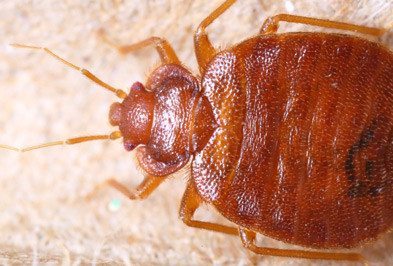Professional Bed Bug Exterminator: DC Services and Heat Treatment
Wiki Article
Discovering the Scientific Research Behind Bed Insect Heat Treatments as a Sustainable Parasite Monitoring Technique
In the world of parasite administration, the quest for sustainable and efficient options remains a consistent pursuit. One such method that has actually gotten traction in the last few years is the usage of heat treatments to battle bed pest invasions. By using the science behind thermal death factors for these consistent bugs, heat treatments use a promising choice to typical chemical-based techniques. The intricacies of just how warm properly removes bed insects and the more comprehensive effects for lasting bug administration methods make this a topic worth discovering additionally.Bed Insect Warm Treatment Process

Thermal Death Factor for Bed Insects
Revealing bed pests to raised temperature levels past their thermal resistance variety is critical for achieving effective eradication in heat treatment procedures. By getting to and keeping temperature levels over the thermal death point for bed bugs, insect administration experts can guarantee extensive elimination of bed bug populaces, consisting of hard-to-reach locations where chemical treatments may be less effective. Understanding the thermal fatality factor for bed insects is necessary for carrying out successful heat treatment approaches and attaining lasting insect management end results.Benefits of Warm Treatments
Having developed the important thermal fatality point for bed insects, it is important to now explore the considerable advantages that heat therapies offer in effectively eliminating these resilient pests. Warmth therapies present numerous vital advantages when compared to traditional chemical methods. One of the key advantages is that warmth can permeate deep right into gaps and splits where bed insects conceal, making sure that even one of the most hard-to-reach areas are warmed to deadly temperatures. This detailed method not just kills real-time insects yet additionally targets bed insect eggs, avoiding future infestations.In addition, heat treatments are eco friendly and non-toxic, making them a sustainable bug monitoring approach. Unlike chemical pesticides, heat treatments do not leave dangerous deposits that can pose dangers to human wellness or the setting. This facet is particularly essential this hyperlink in delicate settings such as hospitals, institutions, and houses where chemical usage might not be desirable.
Furthermore, warmth therapies have a high success rate in getting rid of bed insect problems in a single treatment, reducing the requirement for numerous gos to and decreasing disruption to passengers. This performance not only saves money and time however additionally provides peace of mind to those managing bed pest issues.
Efficiency of Warm Treatment

Research researches have consistently shown the effectiveness of warmth therapies in accomplishing a high rate of bed pest mortality. Properly performed warmth therapies can reach all the gaps and cracks where bed bugs might be nurturing, making sure an extensive approach to elimination. Moreover, heat therapies have actually the added advantage of killing bed pest eggs, which are typically resistant to conventional chemical therapies. Overall, the performance of warm therapies in eradicating bed insect problems makes them a lasting and reliable insect administration approach.
Lasting Insect Management Advantages
Implementing sustainable pest management techniques supplies lasting benefits for both the environment and public wellness. By making use of techniques such as heat therapies for bug control, we can minimize the reliance on harmful chemical pesticides that can have damaging impacts on environments and human health and wellness - DC exterminator. Sustainable parasite monitoring methods help in maintaining biodiversity by targeting certain pests without damaging non-target organisms, thereby keeping a balanced other ecosystem
In addition, sustainable pest monitoring methods add to the general health and wellness of the public. By decreasing direct exposure to toxic chemicals made use of in conventional pest control approaches, warm treatments give a much safer alternative for parasite administration in residential, business, and public spaces. This decrease in chemical usage likewise aids in stopping pesticide residues from infecting water, air, and soil, protecting ecological high quality.
Verdict
To conclude, bed pest warm therapies have actually been shown to be a efficient and sustainable insect monitoring strategy. The thermal fatality factor for bed insects makes them prone to heat treatments, which have countless advantages over conventional chemical therapies. The performance of warm therapies in removing bed bug problems while reducing ecological impact highlights the capacity of this technique as a lasting solution for insect control.The bed insect warmth treatment process involves increasing the temperature level within infested locations to a level that properly removes bed pests and their eggs. By getting to and keeping temperature levels over the thermal fatality point for bed bugs, insect management professionals can guarantee detailed elimination of bed insect populations, including hard-to-reach areas where chemical therapies might be much less efficient. One of the primary advantages is that heat can pass through deep right into fractures and crevices where bed pests conceal, making certain that even the most hard-to-reach locations are warmed to deadly temperatures. Unlike chemical therapies that may leave behind resistant populations, heat therapies supply a safe and ecologically friendly solution that can pass through deep into furniture, wall surfaces, and other hard-to-reach locations where bed bugs conceal.
The thermal fatality point for bed pests makes them at risk to warm treatments, which have countless advantages over traditional chemical therapies.
Report this wiki page